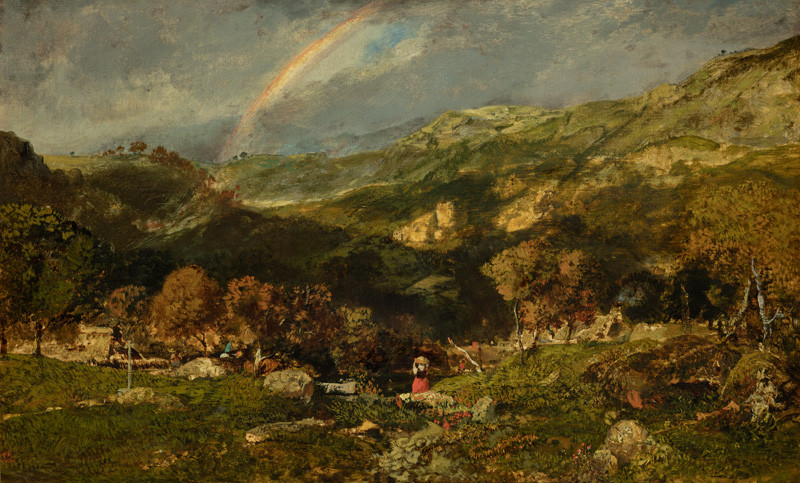The French landscape painter Théodore Rousseau (April 15, 1822, Paris – December 22, 1867, Barbizon) was born 200 years ago. He was one of the first artists to leave the studio to paint his subjects en plein air in the middle of nature. He was especially charmed by the Fontainebleau Forest near Paris with its pine groves and jagged rock formations, which the slightly older Camille Corot discovered for French artists. His painterly companions (Jules Dupré, Narcisse Díaz de la Peña, Charles-François Daubigny) and he often visited the village of Barbizon, which gave its name to an entire school of landscape painting that drew its themes from wanderings in the woodland around Fontainebleau. Their work combined an interest in wild natural scenery in the spirit of Romanticism with a realistic observation of nature.
In the National Gallery painting Landscape after the Rain from 1834–1835, Théodore Rousseau captures a specific moment of the day in the landscape, which anticipates Impressionist painting. The Czechoslovak state acquired this landscape painting in 1923 as part of the purchase of French art. The Landscape after the Rain can be seen at the permanent exhibition The First Republic.
In the National Gallery painting Landscape after the Rain from 1834–1835, Théodore Rousseau captures a specific moment of the day in the landscape, which anticipates Impressionist painting. The Czechoslovak state acquired this landscape painting in 1923 as part of the purchase of French art. The Landscape after the Rain can be seen at the permanent exhibition The First Republic.




